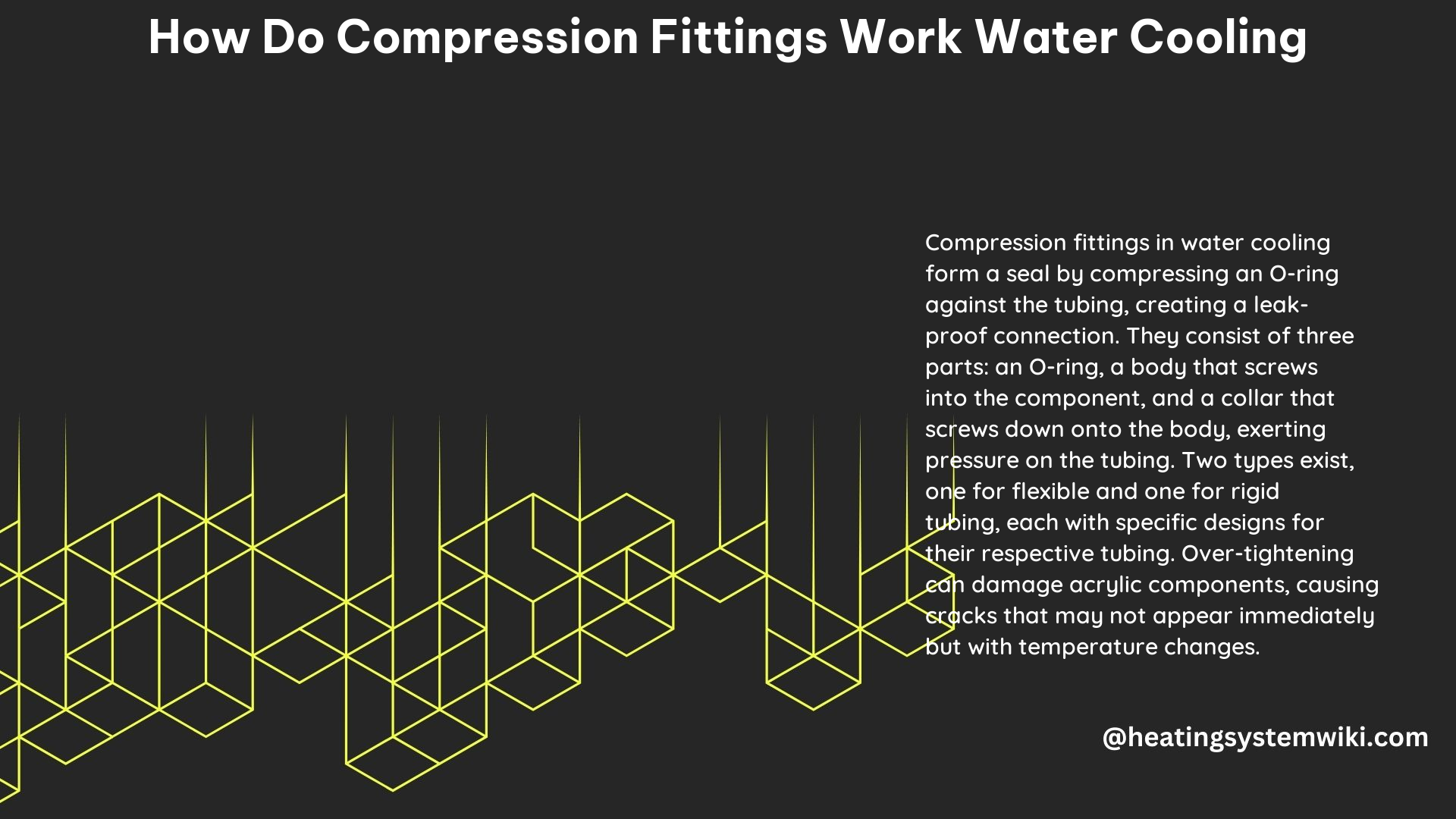Compression fittings are a crucial component in water cooling systems, and they work by forming a seal through compression. These fittings are designed to create a secure and leak-proof connection between the tubing and the various components in a water cooling loop, ensuring the efficient and reliable circulation of the coolant.
Anatomy of a Compression Fitting
Compression fittings are typically composed of three main parts:
-
O-ring: This is a small, circular gasket made of a flexible material, such as rubber or silicone, that sits on the threads of the fitting. The o-ring creates a tight seal between the fitting and the port it is screwed into.
-
Body: The body of the compression fitting is the main component that screws into the port or connection point. It has a smooth, cylindrical surface that the tubing slides over.
-
Compression Ring: Also known as the locking collar, this is the part that screws down onto the body of the fitting. When tightened, it compresses the tubing against the body, creating a secure and leak-proof seal.
Flexible Tube Compression Fittings

Flexible tube compression fittings, also known as barb fittings, are designed to work with soft, flexible tubing, such as PVC or silicone. These fittings have a barbed end that the tubing is pushed over, and the compression ring is then tightened to hold the tubing in place.
To ensure a proper seal, flexible tube compression fittings are typically installed with clamps around the tubing. The clamps help prevent the tubing from coming off or leaking. It is recommended to cover about 70-80% of the barb with the tubing, leaving enough room to remove it if necessary.
Rigid Tube Compression Fittings
Rigid tube compression fittings, on the other hand, are designed to work with rigid tubing materials, such as copper, brass, or stainless steel. These fittings have an o-ring on the inside of the fitting that compresses against the outer diameter of the tubing when the compression ring is tightened, forming a watertight seal.
It is essential to ensure that the outer diameter of the rigid tubing matches the compression fitting to create a proper seal. If the tubing is too small or too large, the seal may not be effective, leading to potential leaks.
Installing Compression Fittings
When installing compression fittings, it is crucial to tighten the collar enough to create a seal but not too tight to damage the tubing or the fitting itself. The recommended tightening method varies depending on the type of tubing:
-
Flexible Tubing: For soft tubing, it is recommended to cover about 70-80% of the barb with the tubing, leaving enough room to remove it if necessary.
-
Rigid Tubing: For rigid tubing, it is recommended to tighten the compression ring with two wrenches, one on the body of the fitting and the other on the compression ring, to ensure a proper seal.
Leak Testing
Leak testing is an essential step in any water cooling build, and it is recommended to perform a pressure test before filling the system with coolant. A pressure test can be done by pressurizing the system to around 50-75% of the maximum operating pressure and checking for any leaks.
This pressure test helps identify any potential issues with the compression fittings or other components in the water cooling loop, allowing you to address them before filling the system with expensive coolant.
Conclusion
Compression fittings are a critical component in water cooling systems, and they work by forming a seal through compression. Understanding the anatomy of these fittings, the differences between flexible and rigid tube compression fittings, and the proper installation and leak testing procedures is essential for building a reliable and leak-free water cooling system.
By following the best practices and technical specifications outlined in this guide, you can ensure that your compression fittings are installed correctly and provide a secure, long-lasting connection for your water cooling loop.
